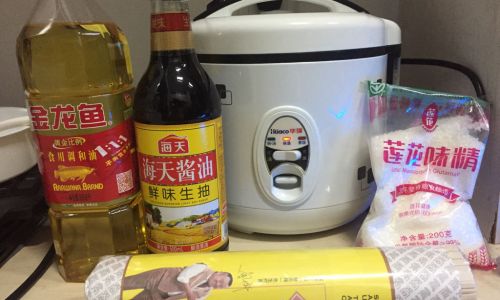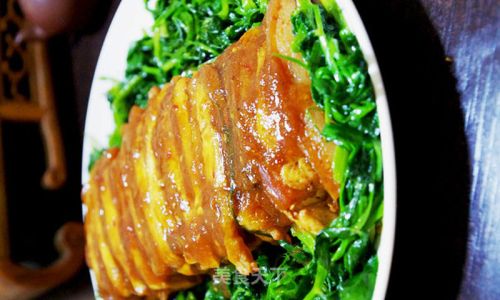Introduction
Cooking noodles is a simple yet versatile culinary task that can be enjoyed by people of all ages and culinary skill levels. While traditional methods often involve boiling water on a stovetop, modern kitchen appliances like electric rice cookers offer a convenient and efficient alternative. An electric rice cooker, primarily designed for preparing rice, can also be effectively utilized to cook noodles due to its ability to maintain a consistent temperature and automatically switch to a keep-warm setting once the cooking process is complete. This article will guide you through the step-by-step process of how to cook noodles using an electric rice cooker, ensuring a delicious and satisfying meal without the hassle of stovetop cooking.
Understanding Your Electric Rice Cooker
Before diving into the specifics of cooking noodles, it’s essential to familiarize yourself with the basic functions and features of your electric rice cooker. Most models come with a non-stick inner pot, a lid, and a few basic settings such as ‘Cook,’ ‘Warm,’ and sometimes even additional options like ‘Quick Cook’ or ‘Porridge.’ Here’s a brief overview of how these components and settings can aid in cooking noodles:
- Inner Pot: The non-stick surface makes it easy to cook and clean, preventing noodles from sticking to the bottom or sides.
- Lid: Keeps steam inside, which is crucial for cooking noodles evenly.
- Cook Setting: Activates the heating element to bring water to a boil.
- Warm Setting: Automatically switches on once cooking is done, keeping the noodles at a safe, edible temperature without overcooking.
Choosing the Right Noodles

The type of noodles you choose will influence the cooking time and texture of your final dish. Here are some popular options and their cooking characteristics:
- Instant Noodles: These are pre-cooked and dried, requiring only a few minutes to soften in boiling water. They often come with flavor packets.
- Dried Pasta: Made from durum wheat, pasta noodles take longer to cook and have a firmer texture when done.
- Rice Noodles: Made from rice flour, these noodles are gluten-free and have a tender, slightly sticky texture when cooked.
- Udon Noodles: Thick, wheat-based noodles with a chewy texture, commonly used in Japanese cuisine.
- Soba Noodles: Made from buckwheat flour, they have a nutty flavor and a firm, slightly elastic texture.
Preparing Your Noodles
Before adding noodles to your electric rice cooker, there are a few preparation steps to consider:
-
Measure Water: The general rule is to use about 4-6 cups of water for every pound of noodles. This ratio ensures there’s enough water to fully submerge the noodles and bring them to a boil without becoming too concentrated or sticky.
-
Seasoning (Optional): If you prefer, you can add a pinch of salt to the water to enhance the flavor of the noodles. Avoid adding too much salt, as it can make the final dish overly salty, especially if you plan to use flavored broth or sauce.
-
Boiling Water: Pour the measured water into the inner pot of your electric rice cooker and close the lid. Turn on the ‘Cook’ setting and let the water come to a rolling boil.
Cooking Noodles in an Electric Rice Cooker
Now that you have your water boiling and your noodles prepared, it’s time to cook. Here’s a detailed step-by-step guide:
-
Add Noodles: Once the water is boiling, carefully open the lid and add your noodles. Use a wooden spoon or chopsticks to gently submerge them, ensuring they don’t stick together or to the sides of the pot.
-
Stir Occasionally: To prevent the noodles from sticking, stir them gently every few minutes. This also helps distribute the heat more evenly, ensuring consistent cooking.
-
Check for Doneness: The cooking time will vary depending on the type of noodles you’re using. Instant noodles may take only 2-3 minutes, while dried pasta can take up to 10-12 minutes. Check the noodles for doneness by tasting a small piece. They should be tender but not overly mushy.
-
Reserve Cooking Water (Optional): If you plan to use the cooking water as part of a sauce or broth, consider reserving a cup before draining. This can add flavor and richness to your dish.
-
Drain Noodles: Once the noodles are cooked to your liking, turn off the rice cooker and carefully remove the inner pot. Use a colander or strainer to drain the noodles, shaking off excess water. If you prefer, you can rinse the noodles with cold water to stop the cooking process and prevent overcooking.

Serving Your Noodles
With your noodles cooked and drained, it’s time to serve them up. Here are a few serving suggestions to elevate your dish:
-
Simple Seasoning: Add a drizzle of olive oil, a pinch of salt, and a sprinkle of freshly ground black pepper for a quick and easy flavor boost.
-
Sauces and Toppings: Enhance your noodles with your favorite sauces, such as soy sauce, teriyaki sauce, or marinara sauce. Top with chopped vegetables, grilled meat, or a fried egg for added texture and flavor.
-
Soup Broth: Serve your noodles in a bowl of hot soup broth for a hearty and comforting meal. Chicken, vegetable, or miso soup are all great options.
-
Stir-Fry: For a more filling dish, stir-fry your noodles with vegetables, tofu, or protein of your choice in a separate pan. This adds an extra layer of flavor and texture.
Storage and Reheating
If you have leftover noodles, they can be easily stored and reheated for later use. Here’s how:
-
Storage: Place cooked, drained noodles in an airtight container and refrigerate for up to 3 days. For longer storage, freeze the noodles in single-serving portions for up to 3 months.
-
Reheating: To reheat refrigerated noodles, you can microwave them in a covered dish until warm, or stir-fry them with a bit of oil over medium heat until heated through. For frozen noodles, thaw them overnight in the refrigerator before reheating.
Conclusion
Cooking noodles in an electric rice cooker is a convenient and efficient way to enjoy a delicious meal without the hassle of stovetop cooking. By following the steps outlined in this article, you can prepare perfectly cooked noodles that are versatile enough to be enjoyed in various ways. Whether you’re looking for a quick and easy weeknight dinner or a hearty, comforting meal, your electric rice cooker can help you achieve culinary success. So, next time you’re in the mood for noodles, give your electric rice cooker a try and discover the ease and deliciousness of this alternative cooking method.






0 comments